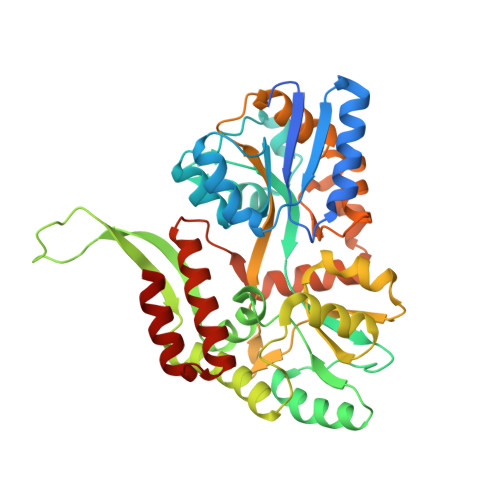The importance of the helical structure of a MamC-derived magnetite-interacting peptide for its function in magnetite formation.
Nudelman, H., Perez Gonzalez, T., Kolushiva, S., Widdrat, M., Reichel, V., Peigneux, A., Davidov, G., Bitton, R., Faivre, D., Jimenez-Lopez, C., Zarivach, R.(2018) Acta Crystallogr D Struct Biol 74: 10-20
- PubMed: 29372895
- DOI: https://doi.org/10.1107/S2059798317017491
- Primary Citation of Related Structures:
5MM3, 6EQZ - PubMed Abstract:
Biomineralization is the process of mineral formation by organisms and involves the uptake of ions from the environment in order to produce minerals, with the process generally being mediated by proteins. Most proteins that are involved in mineral interactions are predicted to contain disordered regions containing large numbers of negatively charged amino acids. Magnetotactic bacteria, which are used as a model system for iron biomineralization, are Gram-negative bacteria that can navigate through geomagnetic fields using a specific organelle, the magnetosome. Each organelle comprises a membrane-enveloped magnetic nanoparticle, magnetite, the formation of which is controlled by a specific set of proteins. One of the most abundant of these proteins is MamC, a small magnetosome-associated integral membrane protein that contains two transmembrane α-helices connected by an ∼21-amino-acid peptide. In vitro studies of this MamC peptide showed that it forms a helical structure that can interact with the magnetite surface and affect the size and shape of the growing crystal. Our results show that a disordered structure of the MamC magnetite-interacting component (MamC-MIC) abolishes its interaction with magnetite particles. Moreover, the size and shape of magnetite crystals grown in in vitro magnetite-precipitation experiments in the presence of this disordered peptide were different from the traits of crystals grown in the presence of other peptides or in the presence of the helical MIC. It is suggested that the helical structure of the MamC-MIC is important for its function during magnetite formation.
Organizational Affiliation:
Department of Life Sciences and the National Institute for Biotechnology in the Negev, Ben-Gurion University of the Negev, Beer Sheva, Israel.
















